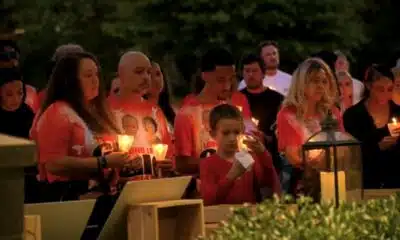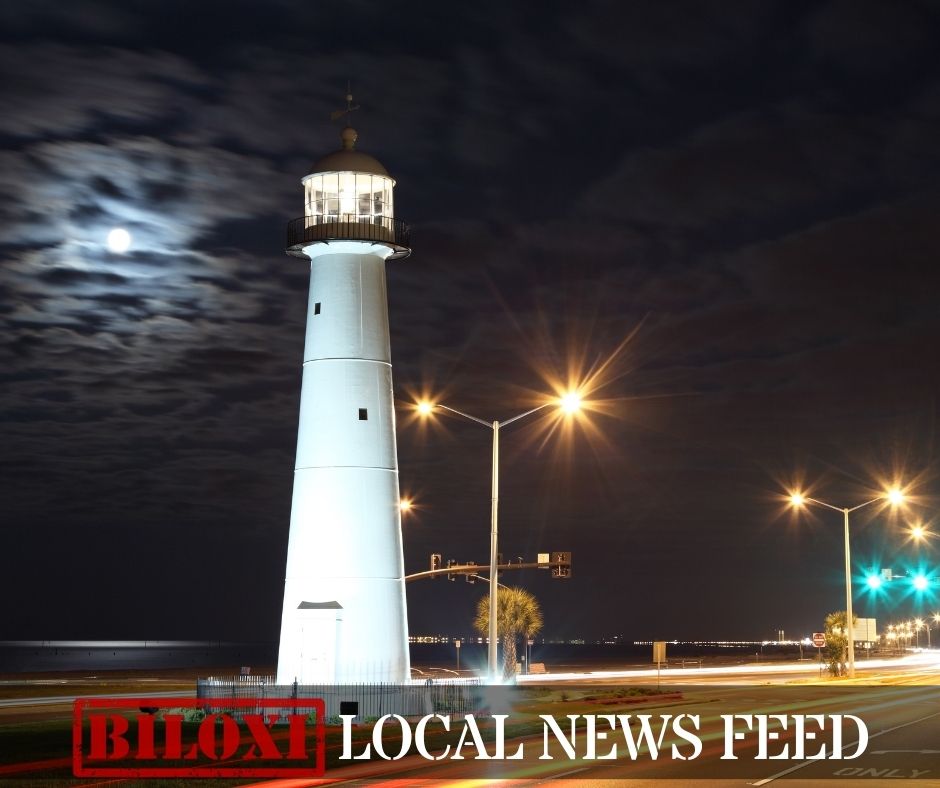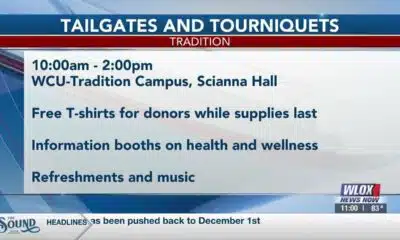News from the South - Louisiana News Feed
For these 3 Southwest Louisiana households, storm recovery struggles continue
by Natalie McLendon, Louisiana Illuminator
March 28, 2025
LAKE CHARLES — Sheriff’s deputies accompanied Federal Emergency Management Agency workers to Terra Hillman’s fenced-in property Jan. 29. They were there to remove the camper she’s lived in since Hurricane Laura plowed through her home in August 2020.
Hillman’s is one of three households in Calcasieu Parish who still need temporary shelter as they struggle to rebuild after the historic 2020 hurricane season. Their personal stories reveal gaps that remain in the disaster recovery process, even as the area sees a boom in multifamily housing construction.
FEMA set a Feb. 28 deadline to remove the remaining trailers from Calcasieu Parish, though the agency did not respond to questions about why it went to Hillman’s property a month early.
When FEMA arrived at her property, Hillman entered her damaged house and would not speak with officials except to request they leave. About an hour later, they left without taking the temporary trailer.
Damage to Hillman’s home has made it difficult for her to repair. Her insurance company initially paid to repair her roof but denied the rest of her damage claims, including home leveling costs, which she said came to more than $300,000. But after her insurance company filed for bankruptcy, Hillman received no additional reimbursements. Court records show she’s suing the Louisiana Insurance Guaranty Association to recoup her losses.
“I’ve tried to re-tarp it [the roof] a few times myself because nobody else would do it because it’s dangerous …” Hillman said. “The weather around here just makes a joke of the tarps and stuff, and so the water just pours in half the house.”
Reached last week, Hillman said she was still living in her trailer while repairs to her home continue. A freak winter ice storm in February 2021 damaged her plumbing, adding to the fixes needed.
Hillman applied for help from Restore Louisiana, the program providing federal grants for homeowners affected by natural disasters in 2020-21. She was initially awarded $19,000 but appealed the award amount. She has since been approved for $325,000 to cover the full demolition and rebuild. However, she said the process has been slow.
Restore Louisiana program’s deadline for issuing grant award agreements was Nov. 1, 2024.
The Louisiana Office of Community Development, which oversees the program, has closed over 13,000 grant agreements, obligating more than $1.06 billion, spokesman Marvin McGraw told the Illuminator.
“Of the 20,803 submitted applications, 99.9% of grant award determinations have been completed, with only 12 homeowners awaiting a final award decision,” McGraw said.
The program expects to finalize any outstanding awards by March 31, he added.
“At this stage, all homeowners have been notified of their program status, and any remaining delays are likely due to missing documentation or unmet program requirements,” McGraw said.
YOU MAKE OUR WORK POSSIBLE.
Financial hardships hinder recovery
Before it was removed from her property, Diana Betters lived in a FEMA trailer in south Lake Charles, outside of city limits. She shared it with six other family members since her manufactured home sustained storm damage in 2020 that included busted pipes and a mold infestation visible around holes in the roof, walls and floors.
“I don’t know how much mold has built up. We’ve been buying the mold stuff and spraying and scrubbing,” Betters said.
Despite efforts to secure more permanent housing after the storms, she faced credit checks and financial hurdles, including a $650 sewer repair.
Betters said she was awarded $75,000 from Restore Louisiana.
“I went and looked at the double-wide homes, and they want $149,000,” Betters said. “What I’m gonna do with it? Well, it’s a down payment, then the rest gonna fall on me. I already have a mortgage” for the damaged home.
Betters said she turned down housing options in nearby Sulphur and Iowa because she didn’t want her 11-year-old granddaughter to change schools. She considered two apartments near McNeese State University but didn’t qualify for a lease because of her low credit score.
According to documents Hillman and Betters received from FEMA and shared with the Illuminator, their trailer rents increased in January, with residents subjected to additional penalties should they continue to live in them beyond February.
Hillman said her $50 monthly rent increased to $200 in January, but she was unsure of what fees she would owe for continuing to live in her trailer past Feb. 28. Betters said her rent rose from $359 to more than $700 in 2024.
Despite the Feb. 28 deadline, FEMA representatives showed up at Betters’ property Jan. 30 and ordered her family to vacate the trailer. As the family packed their belongings, contract workers started removing the trailer skirting to prepare it for removal. But just as they had at Hillman’s home, FEMA workers left the property without the trailer when reporters with the Illuminator and KPLC-TV arrived.
Betters told the Illuminator FEMA officials returned without warning the next day to remove the trailer. She and her family are now back to living in their hurricane-damaged home while they save for something new.
“We’re bunched up in here like sardines,” Betters said, explaining that she’s using some rooms in her damaged home for storage space.
FEMA would not answer specific questions about Betters or Hillman but said in an email that its Direct Housing Mission program ended Feb. 28. When a move-out is completed, FEMA said its campers are “not typically removed from the property on the same day.
Nearly 20 years of disputes
Sulphur resident Ronnie Hossain has lived in FEMA trailers since 2005, when Hurricane Rita leveled the southwest corner of Louisiana. He has been involved in a lengthy dispute with local officials over rebuilding his storm-damaged home, and FEMA put his trailer on its removal list with the two others left over from the 2020 storms.
Hossain said his FEMA trailer was scheduled for repossession for 9 a.m. Jan. 31. However, no one from FEMA arrived when the time came. He attributes the no-show to reporters who were present during previous removal attempts earlier that week.
Hossain claims FEMA wrongly accused him of violations in an attempt to force him out of his temporary housing and that local officials have been unhelpful, further complicating efforts to rebuild his home. He also said that FEMA cited him for failing to meet with a caseworker, but he alleges no caseworker has ever visited his property.
Hossain said he had been paying rent for the FEMA trailer, which recently increased from $225 to $475 per month. Now, he claims, FEMA is demanding $1,600 in rent, an amount he says is unreasonable.
Sulphur Mayor Mike Danahay said Hossain has been entangled in zoning and permitting issues since Hurricane Rita. He has violated city ordinances by having multiple structures on a lot zoned for one single-family dwelling, according to the mayor.
Hossain said the trailer he had been living in since Rita was damaged during Hurricane Laura in 2020. FEMA replaced it, and he removed the original one from his property six months ago.
Hossain has yet to move into his house, and Danahay says he has repeatedly failed to meet deadlines for completing construction. The mayor said Hossain had electrical and plumbing work done without the necessary permits, which has prevented city inspectors from ensuring the home meets safety standards. Despite years of attempted cooperation, officials eventually had to start enforcing ordinances, Danahay said.
The mayor maintains the city’s goal is compliance, not punishment.
“I think we’ve been more than patient with this gentleman to get his house in order so he can move back in,” Danahay stated. “All we are asking him to do is complete the house and do it right to ensure safety.”
Hossein told the Illuminator he has permits to work on the house.
Hossain was locked out of his FEMA trailer Feb. 23, and it was removed from the property March 3, he said. Additionally, he claims FEMA sent a notice to the Internal Revenue Service to garnish more than $1,600 from his monthly income.
He said has been in contact with Restore recently to renegotiate the terms of his grant to continue rebuilding his house.
Multifamily construction boom replacing damaged housing stock
Hurricanes Laura and Delta took dead aim at southwest Louisiana and damaged approximately 44,000 homes, according to a 2020 study. About half of the Calcasieu Parish housing stock was impacted.
More than 750 damaged homes in Lake Charles have either been repaired or rebuilt since 2020, city spokeswoman Katie Harrington said. Additionally, more than 900 new multi-family units have come online or are in the process of being developed.
Woodring Apartments in downtown Lake Charles just marked its grand opening and offers affordable rates for qualifying tenants. Construction is well underway at the 72-unit Calcasieu Heights and Capstone at the Oaks, with 120 apartments. Both properties are intended for senior housing.
Mid-City Lofts, a 46-unit mixed income development, is under construction on a portion of what was once the Lloyd Oaks Housing Development. What’s left of Lloyd Oaks is also being redeveloped.
LOCAL NEWS MATTERS
Please help the Illuminator provide coverage in your area.
Louisiana Illuminator is part of States Newsroom, a nonprofit news network supported by grants and a coalition of donors as a 501c(3) public charity. Louisiana Illuminator maintains editorial independence. Contact Editor Greg LaRose for questions: info@lailluminator.com.
The post For these 3 Southwest Louisiana households, storm recovery struggles continue appeared first on lailluminator.com
News from the South - Louisiana News Feed
Saturday 10 PM Tropics Update: One far-off tropical wave to watch
SUMMARY: A tropical wave near Africa is emerging over the Atlantic but remains disorganized. The National Hurricane Center gives it a 60% chance to develop into a depression or tropical storm, possibly becoming Gabrielle. This system may move northward, staying over the open Atlantic and away from the Gulf, posing no immediate threat. Since the last named storm in late August, stable air, dry conditions, and increased wind shear have suppressed tropical activity in the Atlantic. The next storm names are Gabrielle, Humberto, and Imelda, with only the current wave showing potential for development at this time.
Meteorologist Alexandra Cranford tracks a lone disturbance with a chance of development on Saturday night, September 13, 2025.
News from the South - Louisiana News Feed
Haynes wanted in on Wildlife bribery scheme too, informant says
SUMMARY: Dusty Guidry, a former consultant who pleaded guilty to accepting $800,000 in bribes, testified that Assistant District Attorney Gary Haynes sought involvement in a bribery scheme at the Louisiana Department of Wildlife & Fisheries. Haynes, on trial for conspiracy, bribery, money laundering, and obstruction, was previously appointed to run Lafayette’s pretrial diversion program after supporting DA Don Landry. Guidry revealed Haynes pressured him to include him in a similar diversion program scheme at Wildlife & Fisheries, receiving checks totaling $90,000. The scheme involved splitting bribes among Guidry, vendor Leonard Franques, and former department secretary Jack Montoucet, who has also been charged. The statewide program never launched.
Read the full article
The post Haynes wanted in on Wildlife bribery scheme too, informant says appeared first on thecurrentla.com
News from the South - Louisiana News Feed
OPPJ Comprehensive Plan
SUMMARY: The Ouachita Parish Police Jury is conducting a series of community meetings to gather public input for their comprehensive plan guiding future growth. Police Jury members, including Larry Bratton from District D, emphasize the importance of reflecting residents’ voices in the master plan. Community members participated in interactive stations, allocating resources to priorities like infrastructure and downtown development, to help shape goals for the next 2, 5, and 20 years. Landscape architect Matt Pizatella and partners from Atlas support the effort. Bratton stresses that without proactive planning, the parish risks costly and less beneficial outcomes in the long term.
OPPJ Comprehensive Plan
-
News from the South - Kentucky News Feed7 days ago
Lexington man accused of carjacking, firing gun during police chase faces federal firearm charge
-
News from the South - Alabama News Feed7 days ago
Zaxby's Player of the Week: Dylan Jackson, Vigor WR
-
News from the South - Arkansas News Feed7 days ago
Arkansas medical marijuana sales on pace for record year
-
News from the South - Missouri News Feed7 days ago
Local, statewide officials react to Charlie Kirk death after shooting in Utah
-
Local News Video7 days ago
William Carey University holds 'tailgates and tourniquets' blood drive
-
News from the South - North Carolina News Feed5 days ago
What we know about Charlie Kirk shooting suspect, how he was caught
-
Local News7 days ago
US stocks inch to more records as inflation slows and Oracle soars
-
Local News6 days ago
Russian drone incursion in Poland prompts NATO leaders to take stock of bigger threats














































